SOME motorists in La Alpujarra remember the old slog to Málaga – traversing the ancient, winding coastal road and all its towns. This route was prone to congestion at weekends, with traffic cones and single lane movement around Salobreña. Driving down the old N-323 road to Motril, the sudden and sharp curves made it an ‘hairy’ experience. To solve these issues, the government constructed the A-44 motorway, starting in 1998. An important element is the Rules Viaduct, an impressive-looking construction spanning the Rules dam above Vélez de Benaudalla. This was opened to traffic in May 2009, after work started in 2002!
Long in the making, the 585m Rules viaduct lies between Vélez de Benadualla and Izbor and connects the ‘costa’ to Granada. It’s usually a smooth and effective route – both scenic and fast.
So why does it keep needing repairing? The latest road closure started on 9 September 2025 and is predicted to end on 16 December. What the heck is the problem?
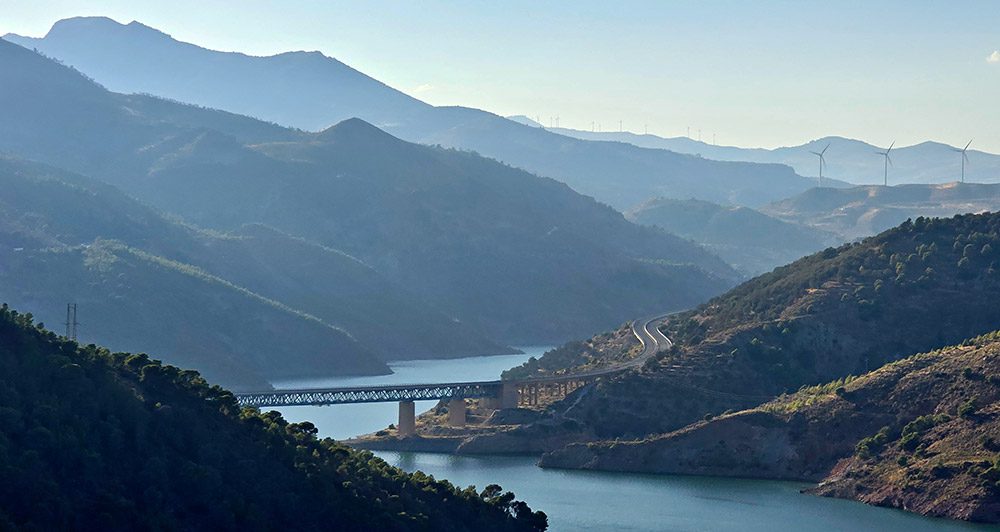
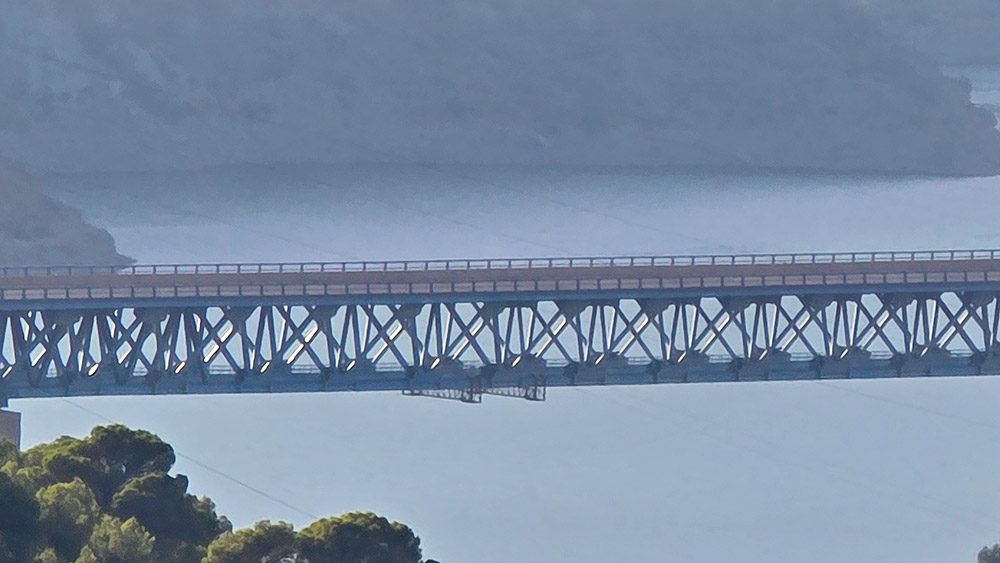
Columns that move with the land
For starters, interventions to reinforce the Rules viaduct have been ongoing for years. The current work is just the latest in a history of landslide-related issues.
Today’s problem involves the south end of the viaduct, around Pillar 4, which is affected by the nearby Arrecife Landslide, as well as the Rules Viaduct landslide, necessitating a major repair. Traffic has been diverted on to the old N-323 road.
An inspection of the Rules viaduct in 2023 detected “several anomalies” in the support system of Pillar Four. Specifically, “a significant landslide on the southern slope where pier number four is located”. The Spanish Ministry of Transport allocated 9.5 million euros at the end of 2023 to address the “serious safety risk”.
However, things don’t always go smoothly and initial works revealed that the problems with Pillar Four were far worse than anticipated, and the road would need to be closed. In October 2024, the government decided to replace the pillar, and build a deeper-penetrating one on more stable ground. The budget rose to 19.67 million Euros.
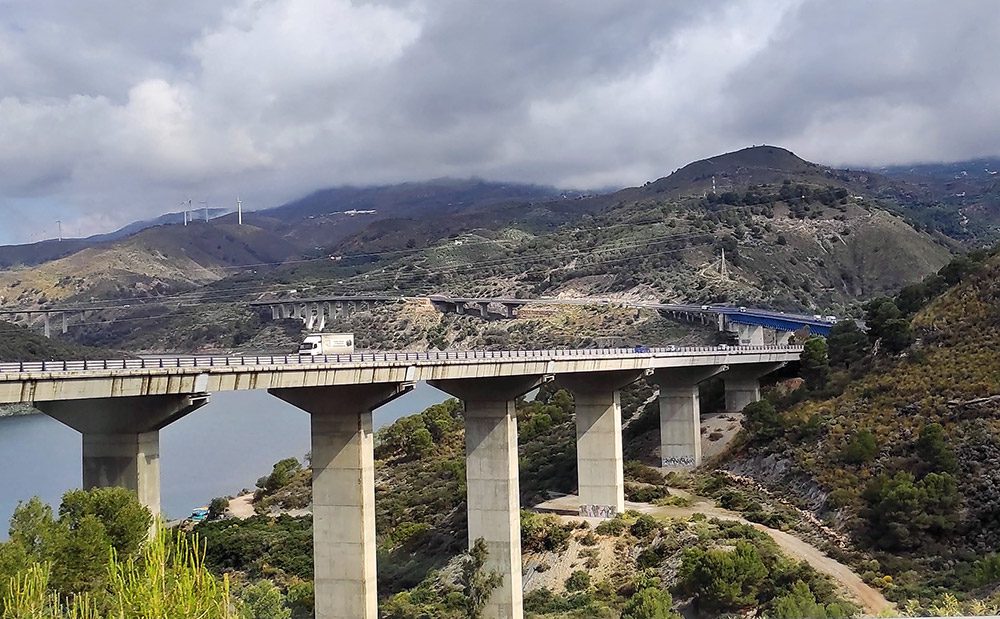
A history of problems with Rules viaduct
Problems with the Rules viaduct started before it was even finished. This delayed the completion of the A-44 between Ízbor and Vélez de Benaudalla for several years. On May 8, 2006, a section of the bridge deck collapsed, meaning that the whole section had to be replaced. An investigation found that the metal structure had failed.
Repairs dragged on, while motorists waited eagerly for a faster route. The Rules reservoir, below the viaduct, was starting to fill with water, meaning that an “artificial island” was needed for the workers, and the reservoir had to be drained several times. This was all extremely complex and expensive. After three years of delays, the section opened on May 20, 2009.
And that’s not all! In 2014, stabilisation works were required on the Rules viaduct. These started when the reservoir level dropped sufficiently to reveal a stability problem in the embankment supporting the north abutment.
The viaduct was closed, traffic was diverted (you’ve guessed it!) along the N-323, and the project cost almost 20 million euros, with 3.8 euros eventually added to the viaduct restoration. The works consisted of replacing the embankment leading to the Rules viaduct, to reduce the weight on the reservoir slope and improve ground stability. Initially, the works took place overnight on weekdays. However, eventually the viaduct was closed to finish the works. The viaduct was reopened in February 2015.
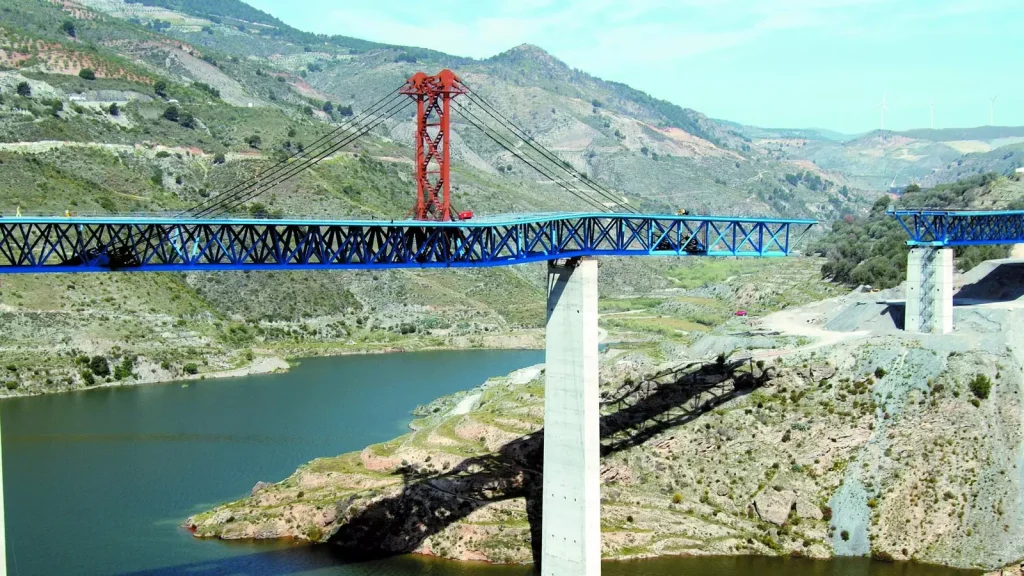
Why the ground won’t sit still
In this mountainous area containing a large reservoir, the land beneath the viaduct moves. Researchers from the University of Granada have tracked the area using satellites for over a decade. By firing radar signals, they can detect movements of just a few millimetres. What they found is sobering: parts of the slopes around the reservoir creep every year, sometimes faster when the water level rises or falls. One of the landslides, known locally as “El Arrecife”, is the most significant.
This is not the kind of landslide that crashes down in seconds; it is slow. However, a motorway bridge needs stable foundations. A valley that moves (even by millimetres) in response to rainfall and reservoir levels is not geologically stable. Engineers who built the viaduct two decades ago knew the slopes were fragile, but the full extent only became clear as the reservoir filled and long-term monitoring began.
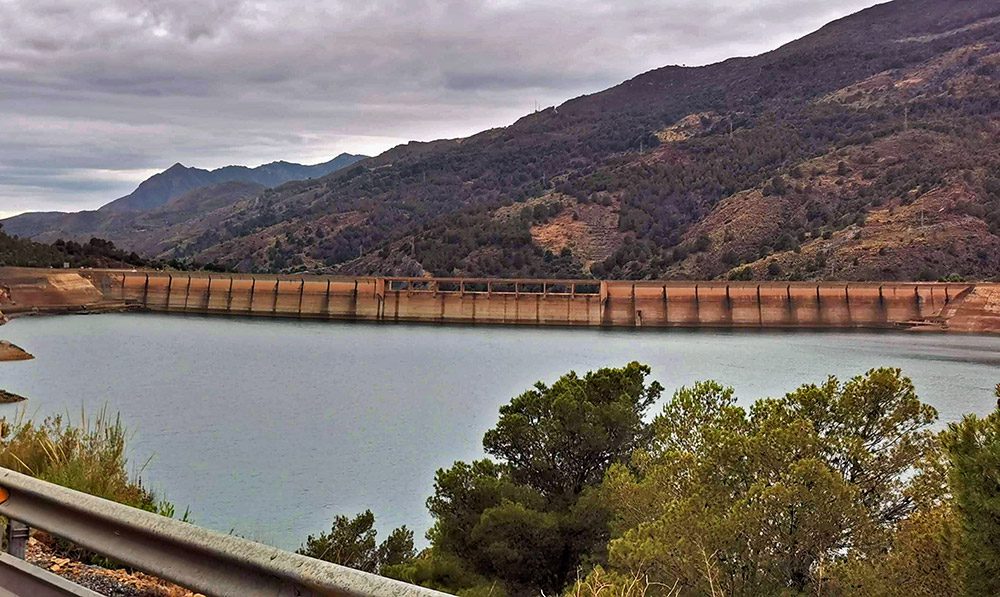
The awkward truth is that it will probably keep happening. As long as the reservoir remains in use, the slopes around it will continue to move. The dam itself is secure, but the viaduct will demand constant maintenance.
Some locals question whether the Rules dam should have been built in the first place. However, it was designed to end water shortages and bring stability to agriculture and tourism on the coast. Today, farms around Motril and Almuñécar rely on its storage. Some academic studies now show that the act of filling the reservoir set off – or re-activated – several deep-seated landslides. With hindsight, engineers might have chosen differently. In practice, the Rules and the Rules viaduct are here to stay, and the challenge is how to manage the consequences.
As for Vélez de Benaudalla, the town sits just downstream from the reservoir, at the point where the A-44 begins its descent to the coast. Some people have asked what might happen during an extreme storm like those seen in Valencia or Murcia. This could potentially cause reservoir operators to release large volumes of water. Official statements emphasise that such releases are controlled and pose no risk to the dam itself.
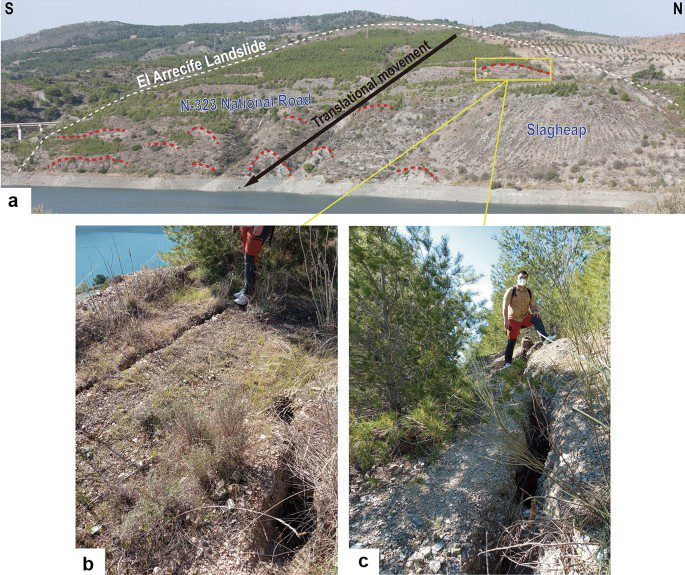
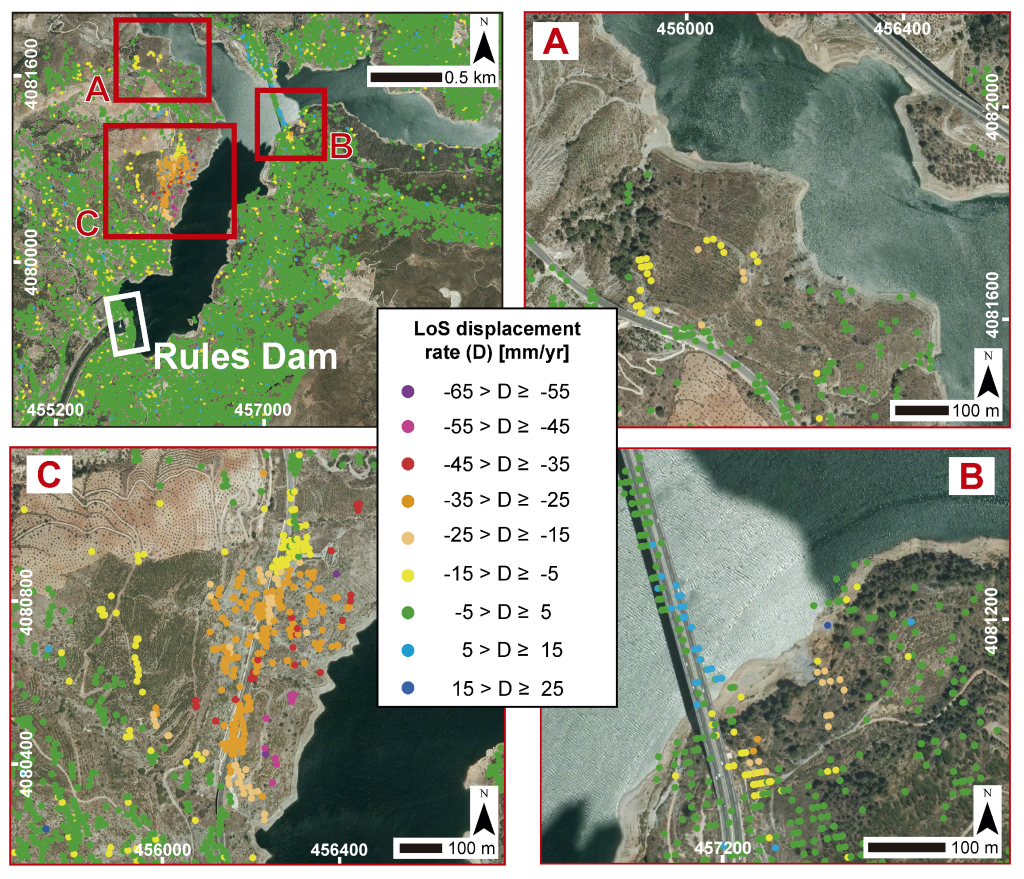
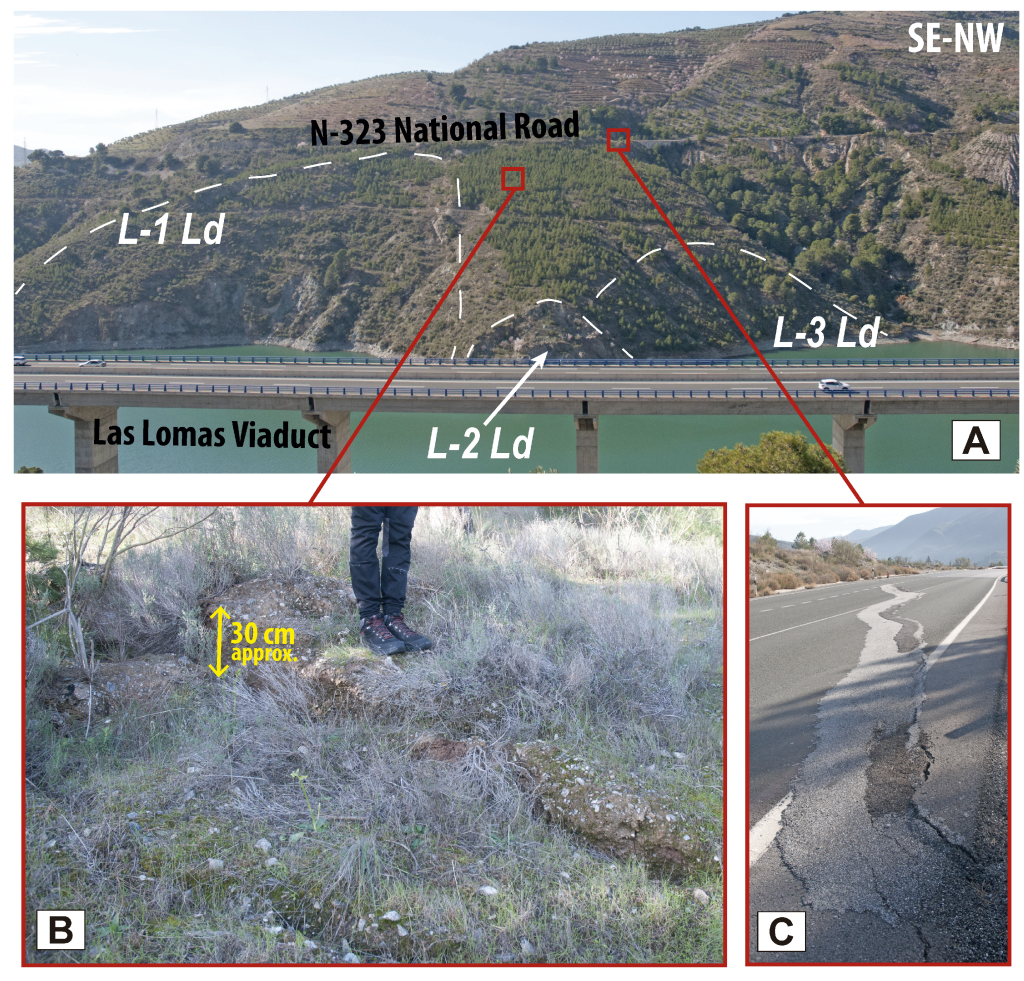
Credit: University of Granada
Who is really affected by the Rules viaduct closure?
A frequent question on local forums is “can you travel between Órgiva and Lanjarón southwards and northwards respectively without problems – i.e. getting stuck in a traffic jam. The answer is “yes”. Regarding the route from Órgiva to the coast, or from Lanjarón to Granada, the closure at Rules make no difference to your journey. The real pain falls on those driving directly between Granada and Motril.
Tailbacks have resulted at peak times. “It has added at least half an hour to my daily commute from Motril to Centro Nevada Shopping,” said a worker in a mobile phone shop.
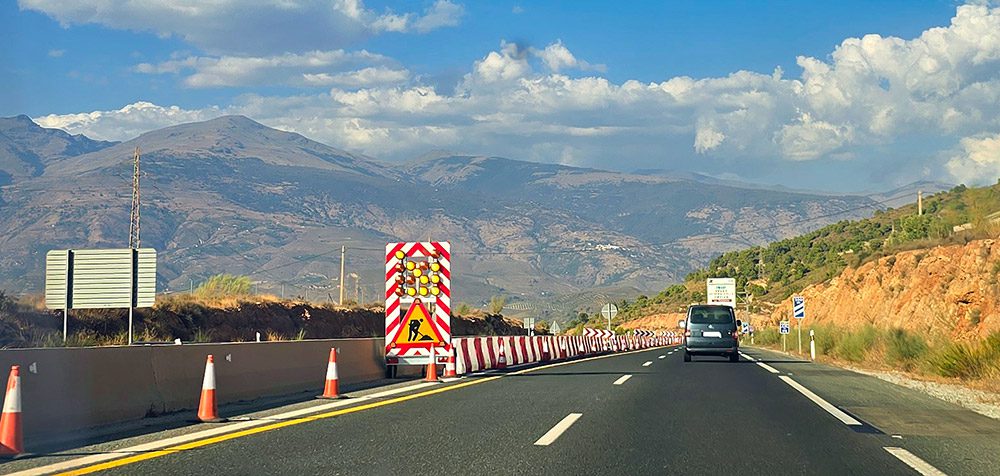
More local construction for motorists
To the east, another road project is underway again: to bypass the winding road between the A-44 and the spa town of Lanjarón. Anyone who drives along that road knows that a lorry in front of you means frustration! After some delay, the Junta de Andalucía has resumed works. Almost €19 million has been committed to widening and straightening the road.
The initial phase of the Lanjarón bypass (A-348) from the Tablate junction to the water-bottling plant was estimated to cost over €10 million, with an additional €2 million added for modifications, bringing the total to approximately €12 million for this first stage.
The second phase will cost over 6.4 million euros, financed with European FEADER funds, and has a construction period of 12 months. It is somewhat confusing which phase is which – and where we stand right now – but reports show that the second phase has definitely now started.
According to a statement from regional government, this 1.3km section features “significant improvements” to the road layout, which aims to address the current situation on a road that carries nearly 4,000 vehicles per day, 9% of which are heavy vehicles. The new road will provide better access to the region and boost the economy.
The end of the road is nigh?
Although the Rules Viaduct is likely to remain problematic, the current closure won’t go on forever. At present, some repair works and lane closures on the ‘autovia’ towards Málaga are adding to the “fun”. But imagine when Rules is rectitifed and the Lanjarón bypass completed, leading to some motoring ‘joy’.
Meanwhile, bear a thought for residents of La Alpujarra 100 years ago. Gerald Brennan reported in his book, ‘South from Granada‘, walking from the high Alpujarra (Yegen) to both Málaga and Granada. You can dwell on that thought if you’re stuck in a tailback for half an hour!

